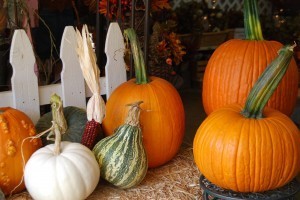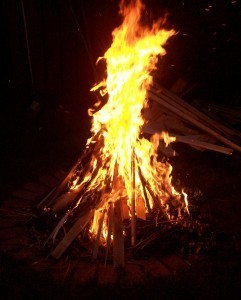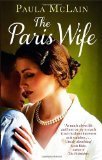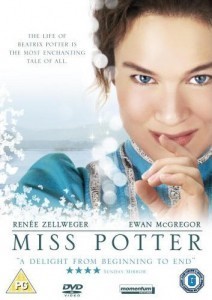Hannah Fielding's Blog, page 145
October 15, 2012
Favourite poem, ‘The Jaguar’s Dream’, and a debate on the merits of the adjective
The adjective, as an element of language, are frequently vilified by writers:
“[I was taught] to distrust adjectives as I would later learn to distrust certain people in certain situations.” – Ernest Hemingway
“[Whoever writes in English] is struggling against vagueness, against obscurity, against the lure of the decorative adjective.” – George Orwell
“Adjectives are frequently the greatest enemy of the substantive.” – Voltaire
“Most adjectives are also unnecessary. Like adverbs, they are sprinkled into sentences by writers who don’t stop to think that the concept is already in the noun.” – William Zissner
“The adjective has not been built that can pull a weak or inaccurate noun out of a tight place.” – E.B. White
“The adjective is the banana peel of the parts of speech.” – Clifton Paul Fadiman
“The road to hell is paved with adjectives.” – Stephen King
“When you catch an adjective, kill it. No, I don’t mean utterly, but kill most of them — then the rest will be valuable. They weaken when close together. They give strength when they are wide apart.” – Mark Twain
“Block that adjective!” – Alexander McCall Smith in the Wall Street Journal
The fear is that adjective use equates to overwriting, and the preferred style among some literary circles is stripped back, simple writing.
I enjoy reading simple writing. But I also very much enjoy descriptive writing in which the choice of word – and the use of adjectives – helps me conjure up a picture in my mind of a setting, a character, a sensation. Readers of my book Burning Embers will know that my writing style incorporates adjectives, because I very much want to convey the essence of the scene. Ezra Pound said, “Use no superfluous word, no adjective, which does not reveal something.” I think her words hold the key: use only adjectives that add to the meaning of the nouns and verbs – that reveal more to the reader.
A writer whose works I have long admired is Leconte de Lisle, and he certainly embraces adjectives. Today, I would like to share with you ‘The Jaguar’s Dream’. It is not a long poem, but through wonderful use of description de Lisle creates powerful images and feelings in the reader. First, I will share with you the poem as is stands. Then, to demonstrate the power of description, I will strip out the adjectives and adverbs. For me, the descriptive version is by far the best. But perhaps the truth here is that just as we writers have our own styles, so do we as readers have our own preferences.
The Jaguar’s Dream
Under the swarthy mahoganies, the flowering creepers,
In the sultry, motionless and fly-swarmed air,
Hang, and, winding round below amongst the stumps,
Gently rock the brilliant, quarrelsome parrot,
The yellow-backed spider and the aggressive monkeys.
There it is that the slayer of oxen and horses,
Along the old dead tree-trunks with their mossy bark,
Comes, baleful and tired, with even steps.
On he goes, rubbing his muscular loins, puffing them out;
And, from the mouth gaping with a dull thirst,
A short, harsh breath, with a sudden shake,
Disturbs the great lizards, heated by the noon-day fires,
Whose escape trails spark across the red-brown grass.
In a hollow of the woods forbidden to the sun
He sinks down, stretched out on some flat rock;
With a broad lick of his tongue he gives a gleaming smoothness to his paw;
He half-closes his gold-glinting eyes dulled with slumber;
And, with his dormant strength wrapped in wandering illusion,
Twitching his tail and sending a quiver down his flanks,
He dreams that, deep amidst the green plantations,
With a leap, he is sinking his gory talons
Into the flesh of the startled and bellowing bulls.
The Jaguar’s Dream – adjectives and adverbs removed
Under the mahoganies, the creepers,
In the air,
Hang, and, winding round below amongst the stumps,
Rock the parrot,
The spider and the monkeys.
There it is that the slayer of oxen and horses,
Along the tree-trunks with their bark,
Comes with even steps.
On he goes, rubbing his loins, puffing them out;
And, from the mouth gaping with a thirst,
A breath, with a shake,
Disturbs the lizards, heated by the fires,
Whose escape trails spark across the grass.
In a hollow of the woods forbidden to the sun
He sinks down, stretched out on some rock;
With a lick of his tongue he gives a smoothness to his paw;
He half-closes his eyes dulled with slumber;
And, with his strength wrapped in illusion,
Twitching his tail and sending a quiver down his flanks,
He dreams that, deep amidst the plantations,
With a leap, he is sinking his talons
Into the flesh of the bulls.
French version: Le rêve du jaguar
Sous les noirs acajous, les lianes en fleur,
Dans l’air lourd, immobile et saturé de mouches,
Pendent, et, s’enroulant en bas parmi les souches,
Bercent le perroquet splendide et querelleur,
L’araignée au dos jaune et les singes farouches.
C’est là que le tueur de boeufs et de chevaux,
Le long des vieux troncs morts à l’écorce moussue,
Sinistre et fatigué, revient à pas égaux.
Il va, frottant ses reins musculeux qu’il bossue ;
Et, du mufle béant par la soif alourdi,
Un souffle rauque et bref, d’une brusque secousse,
Trouble les grands lézards, chauds des feux de midi,
Dont la fuite étincelle à travers l’herbe rousse.
En un creux du bois sombre interdit au soleil
Il s’affaisse, allongé sur quelque roche plate ;
D’un large coup de langue il se lustre la patte ;
Il cligne ses yeux d’or hébétés de sommeil ;
Et, dans l’illusion de ses forces inertes,
Faisant mouvoir sa queue et frissonner ses flancs,
Il rêve qu’au milieu des plantations vertes,
Il enfonce d’un bond ses ongles ruisselants
Dans la chair des taureaux effarés et beuglants.
With gratitude to John Harding for the translation.
Pumpkin Recipes for Halloween
The end of the month is fast approaching, and with it the fun of carving pumpkins. I love to pick pumpkins in varying sizes to create a family of pumpkin heads – choosing the biggest available is always fun!
But before you begin scooping out all the innards, have you thought about how you’ll use the delicious pumpkin flesh? It’s all too easy to get caught up in pumpkin carving as a craft activity and forget that you’re in fact dealing with a delicious fruit (yes, pumpkins are technically fruits). In addition, the pumpkin is a very nutritious food, packed full of beta carotene and also containing dietary fibre, potassium, and vitamins C and E. So before you throw away all the nutritious and tasty flesh, take a look at these ideas for using it up:
Roast in good-quality olive oil with sprigs of rosemary.
Add puree to cakes and scones.
Make soup – if you’re feeling creative, serve the soup in a pumpkin shell (not a carved one though; that would be messy!).
Make a pumpkin pie.
Add chunks to a pasta dish (roasted tastes best).
Grill slices coated in olive oil, paprika and crushed garlic.
Add to risotto.
If you have any pumpkins left over, open at the top, scoop out the very middle in which lie the seeds and then stuff with breadcrumbs or rice, feta cheese, tomatoes, mushrooms and sliced sausage, and then wrap in foil, stand in a baking tray containing a little water, and bake.
See also this helpful article that offers 41 recipes for pumpkin: http://www.bhg.com/thanksgiving/recipes/pumpkin-recipes/. Pumpkin macaroni cheese, even! I find myself rather drawn to the recipe for Chocolate-Glazed Pumpkin Pie Cheesecake…
In addition, if you have any flesh remaining, you can use it in your beauty regime. With its high concentration of vitamin A, vitamin C and zinc, pumpkin flesh is good for your skin. Add pureed pumpkin (cooked) to a little honey and milk and apply as a face mask. Resist the temptation to lick!
October 13, 2012
“Love must be as much a light, as it is a flame”
… so wrote American writer and thinker Henry David Thoreau.
The imagery of fire is prevalent in cultures as a symbol of desire and love. Songs, dance, theatre, paintings, poetry, literature – in all art forms, we think of passion in terms of a fire within. Think of the following, for example:
‘Flame on burn desire / Love with tongues of fire’ – from ‘Relax’, Frankie Goes to Hollywood
‘Your love is like a burning fire / It keeps on burning burning burning / In my soul – from ‘Love Fire’, Simply Red
As soon go kindle fire with snow, as seek to quench the fire of love with words. – William Shakespeare, Two Gentlemen of Verona
Love is like a friendship caught on fire. In the beginning a flame, very pretty, often hot and fierce, but still only light and flickering. As love grows older, our hearts mature and our love becomes as coals, deep-burning and unquenchable. – Bruce Lee
To love is to burn – to be on fire, like Juliet or Guinevere or Eloise… – Emma Thompson writing on Sense and Sensibility
It is no accident that my romance novel set in sultry Kenya is entitled Burning Embers, for it tells the story of two people irrepressibly drawn to each other with strong feelings of attraction and love. Take the following excerpts:
Her face alone burned with passion, and her eyes, steadily fixed upon the man she apparently loved, were afire.
She had responded to his furious desire with equal fire…
Her face felt suddenly hot as the gold in his eyes intensified, burning into hers as though trying to read her most secret thoughts.
The desire that burned his body…
The burning embers that were smoldering dangerously in both their minds and their bodies…
I particularly enjoyed writing the scene in the book in which Coral and Rafe are forced to take shelter in a cave to escape a wild storm. To warm the shivering pair, and to soothe Coral who is afraid of the storm, Rafe lights a fire. There is something so romantic about firelight, and in this scene it reflects the emotions of the characters themselves.
But as Thoreau so eloquently put it, fire is not enough in and of itself – the light which the fire provides is essential to the relationship. The fire of love must light the way for the couple in life, as well as warming and fuelling their passion. Indeed, I would go a step further and suggest that the fire must not only be a light, but enlighten – the love must empower a journey of self-discovery to a place of balance, acceptance and joy.
October 12, 2012
Book review: The Paris Wife by Paula McLain
I could not resist buying this book, for its setting: 1920s Europe, predominantly; its set of characters, including seminal American writers; and its intriguing perspective on Hemingway’s first marriage and rise to fame. From the blurb:
Chicago, 1920: Hadley Richardson is a shy twenty-eight-year-old who has all but given up on love and happiness when she meets Ernest Hemingway and is captivated by his energy, intensity and burning ambition to write. After a whirlwind courtship and wedding, the pair set sail for France. But glamorous Jazz Age Paris, full of artists and writers, fuelled by alcohol and gossip, is no place for family life and fidelity. Ernest and Hadley’s marriage begins to founder, and the birth of a beloved son serves only to drive them further apart. Then, at last, Ernest’s ferocious literary endeavours begin to bring him recognition – not least from a woman intent on making him her own . . .
Quite simply this is best book I’ve read in a long while – and I’ve read many superb books! The writing is exquisite – moving, insightful, fascinating, illuminating and carefully researched.
There are four aspects to the book that I love.
The writing style
I adore Paula’s writing style. As a reader, you have the sense that – like Hemingway – she has slaved over each sentence, and carefully crafted the book. There’s no hectic rush though the story; she takes her time and describes details that really bring the story to like. Here’s one of my favourite passages:
For the first time since I was a girl, I felt the heady rush of being afraid, and liked the sensation. At the bottom, I’d barely come to a stop when Ernest whirled me up out of the dark and kissed me hard. I felt his tongue for a hot instant against my lips.
‘Oh,’ was all I could say. I couldn’t think about whether anyone was watching. I couldn’t think at all. his face was inches from mine, more carged and convinving and altogether awake than anything I’d ever seen.
‘Oh,’ I said again, and he let me go.
The setting
Wonderful. Paris came to life for me through the descriptions, and I could picture each location and relate it to my current experience of the city. I enjoyed the descriptions of all the places the characters visited – especially Spain, for the Running of the Bulls festival. The book really encapsulates the Jazz Era and the bohemian scene during the inter-war period.
The characterisation
I so admire the lead character, Hadley – the Paris wife – and I was fascinated by Hemingway; he’s a tragic but lovable character. I also loved getting to know other writers of the day, like Gertrude Stein, Zelda and F. Scott Fitzgerald, Ezra Pound, James Joyce and Ford Maddox Ford.
The depiction of the writer’s struggle
This is a book to warm the heart of a writer. We see Hemingway’s struggle with his craft, his mistakes and his triumphs. What most stood out for me was his ambition. This was a man doggedly determined to go down in history as a great writer… and so he has.
The Paris Wife is available now from Amazon; click on the book cover below to visit the store.
October 9, 2012
A glorious splash of colour
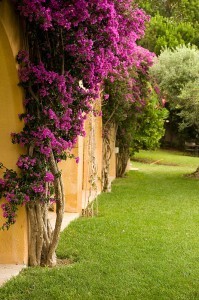 Luscious purple bougainvillea on the front of my house. The colours in France are so vivid; it’s one of my favourite things about living there.
Luscious purple bougainvillea on the front of my house. The colours in France are so vivid; it’s one of my favourite things about living there.
October 8, 2012
Win: £25/$40 Amazon voucher, fabulous jazz CD and a copy of my book
Each month I run a giveaway competition for my readers. In October’s competition, I’m giving away:
1 copy of Burning Embers plus a £25 (US$40) gift voucher
1 copy of Burning Embers plus wonderful Jazz singer Peter Borthwick‘s debut CD ‘This Moment’
To enter, simply get in touch with me and let me know why you’d like to read Burning Embers:
Email: burning-embers(at)hotmail.co.uk
Twitter: @fieldinghannah
Facebook: www.facebook.com/fieldinghannah
Good luck!
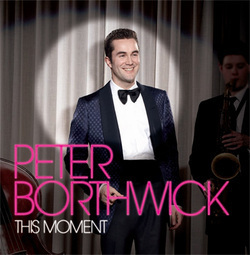
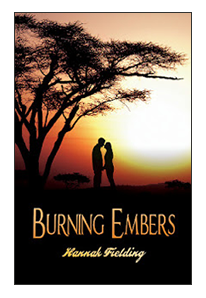
Favourite writer: Charles Baudelaire
I was schooled by French nuns at a convent school, and therefore was given a good grounding in French literature. I loved it – so much so that I took a degree in the subject as a young woman. One of my favourite writers of those revered in France is Charles Baudelaire. His poems captured such beauty in nineteenth-century France, and his stanzas echoed in my mind through my teenage years.
Baudelaire was born in Paris in 1821. He lost his father at the tender age of six, and detested his stepfather, whom his mother married soon after her husband’s death. Baudelaire’s family were determined that he would be a diplomat, but he had other ideas. He wanted to be a writer. To his family’s dismay, he became something of a dandy, dallying with an actress, Jeanne Duval, and getting into debt. Hopping between the homes of his mistresses to hide from debtors, he immersed himself in writing poetry. In 1846, Baudelaire found a kindred soul in the form of Edgar Allen Poe, and as well as writing his own original works, he spent the following seventeen years translating Poe’s works into French.
Baudelaire published just one book of poetry, entitled Les Fleurs du Mal (The Flowers of Evil) in 1857. It was not warmly received, despite praise from Victor Hugo, Sainte-Beuve, Théophile Gautier and other poets, because it explored topics in a way considered to be unsavoury. For example:
His take on love: “There is an invincible taste for prostitution in the heart of man, from which comes his horror of solitude. He wants to be ‘two’. The man of genius wants to be ‘one’… It is this horror of solitude, the need to lose oneself in the external flesh, that man nobly calls ‘the need to love’.”
His take on marriage: “Unable to suppress love, the Church wanted at least to disinfect it, and it created marriage.”
His take on pleasure: “Personally, I think that the unique and supreme delight lies in the certainty of doing ‘evil’ –and men and women know from birth that all pleasure lies in evil.”
Indeed, such was the uproar caused by the book that Baudelaire, his publisher and his printer were prosecuted for creating an offense against public morals.
Today, though, Baudelaire’s genius is recognised. He is credited as being the man who coined the very term ‘modernity’ (modernité), and his works are critically admired for the rhythm of his verse, the strength of his conviction and voice, and the stark beauty with which he describes the world of his time.
The following poems is one of my favourites. I am very much a summer person – I love warmth and sunshine – and I think Baudelaire superbly captures in his poem that feeling of gloom that comes over one as the days shorten and become cooler.
Autumn Song
i
Soon we will sink in the frigid darkness
Good-bye, brightness of our too short summers!
I already hear the fall in distress
Of the wood falling in the paved courtyard.
Winter will invade my being: anger,
Hatred, chills, horror, hard and forced labor,
And, like the sun in its iced inferno,
My heart is but a red and frozen floe.
I hear with shudders each weak limb that falls.
The scaffold will have no louder echo.
My spirit is like a tower that yields
Under the tireless and heavy ram blow.
It seems, lulled by this monotonous sound,
Somewhere a coffin is hastily nailed,
For whom? Summer yesterday, autumn now!
This mysterious noise sounds like a farewell.
ii
I love the greenish light of your long eyes,
Sweet beauty, but all is bitter today.
Nothing, not love, the boudoir or the hearth
Is dearer than the sunshine on the sea.
Still love me, tender heart! Be a mother
Even to the ingrate, to the wicked,
Lover, sister, ephemeral sweetness
Of fall’s glory or of the setting sun.
Short-lived task! The tomb awaits, merciless.
Ah! Let me, my head resting on your knees,
Savor, regretting the white hot summer,
The autumn’s last rays yellow and tender.
Translated by Thomas D. Le, 30 June 2001
Chant d’Automne
i
Bientôt nous plongerons dans les froides ténèbres;
Adieu, vive clarté de nos étés trop courts!
J’entends déjà tomber avec des chocs funèbres
Le bois retentissant sur le pavé des cours.
Tout l’hiver va rentrer dans mon être: colère,
Haine, frissons, horreur, labeur dur et forcé,
Et comme le soleil dans son enfer polaire,
Mon coeur ne sera plus qu’un bloc rouge et glacé.
J’écoute en frémissant chaque bûche qui tombe;
L’échafaud qu’on bâtit n’a pas d’écho plus sourd.
Mon esprit est pareil à la tour qui succombe
Sous les coups du bélier infatigable et lourd.
Il me semble, bercé sur ce choc monotone,
Qu’on cloue en grande hâte un cercueil quelque part,
Pour qui ?– C’était hier l’été; voici l’automne !
Ce bruit mystérieux sonne comme un départ.
ii
J’aime de vos longs yeux la lumière verdâtre,
Douce beauté, mais tout aujourd’hui est amer,
Et rien, ni votre amour, ni le bourdoir, ni l’âtre,
Ne me vaut le soleil rayonnant sur la mer.
Et pourtant, aimez-moi, tendre coeur ! soyez mère,
Même pour un ingrat, même pour un méchant;
Amante ou soeur, soyez la douceur éphémère
D’un glorieux automne ou d’un soleil couchant.
Courte tâche ! La tombe attend; elle est avide !
Ah ! laissez-moi, mon front posé sur vos genoux,
Goûter, en regrettant l’été blanche et torride,
De l’arrière-saison le rayon jaune et doux.
October 6, 2012
Writing, then and now
I recently read a book about the writers of the Jazz Age (see my forthcoming review of The Paris Wife, which tells the story of Ernest Hemingway’s wife in the 1920s). It struck me how different writing was then compared to now:
Time: Of course, there have been writers through the ages who have written alongside working a day job, but in days gone by, writers – those who wanted to be great writers – made it their life’s work to write. They worked tirelessly, consumed by their craft. Most people who had to work for a living did not have the time to also write – feeding their family came first. And of course many would have lacked the education. But now, it is increasingly difficult to make a choice, as a young person, that you will be a writer. What will you live on? Most writers have to fit in trying to write on top of a day job, and only once your writing is bringing in enough income can you live the dream and write full-time.
Dedication: Were the likes of Coleridge and Browning and Austen and Bronte and Joyce and Stein and Faulkner and Dickens and Beecher Stowe more dedicated to writing than modern-day writers? I think they certainly took writing very seriously, and wanted to write important books, books that made a difference and advanced the very art form of writing. Nowadays, we have so many genres and kinds of writing that one can be a more frivolous writer by choice.
Tools: A pen and paper. A scroll and paper. A typewriter. How much more cumbersome these ways of writing must have been, but also inspiring. There is something so different about writing physically – the thought process changes; the speed slows, forcing one to think carefully about each word; there is more need to write well the first time; there is something delightfully artistic about the act, like a painter with his canvas and palette. Of course, these days we can choose to use such tools, but we’re expected, largely, to use the computer – imagine my publisher’s dismay if I submitted a book handwritten on paper! The new way is modern and efficient. But is it a little soulless, I wonder? Has it stripped out some of the romance of writing?
Publishing: Forget submitting your book to hundreds of publishers, the world of yesteryear publishing was smaller, and a publisher would have to LOVE your book to take it on such was the risk of publishing a new author. Author branding did not exist in the form it does today – you were judged on your writing. But oh, to have to post your entire manuscript to a publisher! What if it got lost? Heartbreaking.
What do you think? Has writing in the 21st century galloped along into exciting territory, or lost something of its greatness? How do you prefer to write – the old-fashioned way, or with your arms flung wide to embrace technology? Would you have preferred to be an author like Beatrix Potter, who became well-loved simply for her wonderful books and their placement in book shops, or do you love modern digital marketing and systems that mean you can become a Kindle millionaire via clever use of the likes of Twitter and blogging? I would love to hear your thoughts.
October 5, 2012
Favourite film: Miss Potter
On a recent visit to Gloucester I could not resist popping into a quaint little shop/museum on a side street near the Cathedral. The House of the Tailor of Gloucester is the setting for Beatrix Potter’s charming children’s tale, and is now a wonderful shop and museum dedicated to the great English writer’s works. I’ve always admired her beautiful illustration style and the simplicity of her stories, and I was delighted to buy there a copy of the 2006 film Miss Potter, which tells her story.
I knew nothing of Beatrix’s past, or the film, but was drawn to the movie for the fact it covers two subjects close to my heart: love and writing (and the love of writing!).
Oh what a lovely, heart-warming, inspiring film. Quintessentially English, despite American Renee Zellweger playing the eponymous heroine. The settings are wonderful – I love the open spaces of the Lake District in particular. The love story is so touching, and vivid. Doesn’t every woman who writes dream of meeting a man who has such faith in her abilities?
I find myself most inspired by Beatrix Potter’s life – her strength and courage as a woman, her determination to be true to herself and to pursue her writing ambitions, her independence, her creativity. This is a woman who found fame and fortune as a result of her writing at a time when women writers were rare indeed, much less successful. And what touched me most is what Beatrix did with the fruits of her labour – investing her royalty proceeds into preserving one of England’s most beautiful places.
It’s a film I highly recommend to fellow female writers. But perhaps it is worth mentioning one moment in Beatrix’s story that could serve to further inspire – although the film presents the story as Beatrix getting a publishing contract for her first book The Tale of Peter Rabbit, and building from there, in fact Beatrix independently published that first book before it was picked up by a publisher. This was a woman who would not take no for an answer: a role model for us all!
October 4, 2012
Book review: The Golden Leopard by Lynn Kerstan
From the blurb:
Lady Jessica “Jessie” Carville gave up on up men six years ago, after being deserted by Lord Hugo Duran, the man she loved beyond all reason. She has carried on with her life and . . . shockingly . . . with her career. Although most of Society frowns upon a woman in business, Lady Jessica is a natural at collecting and selling antiques. She’s put the past behind her until one night at an auction, when Duran shows up. He’s back in England, and he has plans that involve her. Can she resist what he has in mind? Duran, though willful and mysterious, is a gentleman—when it suits him. Yet he left his lover without so much a note saying why. Now he’s on a mission filled with danger. If he doesn’t succeed, he will die. Can he convince Jessica to help him without endangering her as well?
I thoroughly enjoyed this book. The story is compelling and exciting, and the plot is satisfyingly detailed and elaborate, making for an interesting, page-turning read. Much suspense is built up through the book – Lynn is an expert in drip-feeding information, making you keen to read on. She also writes dramatic scenes superbly; I was totally lost in the world she creates in the book.
I loved the characters, Jessie and Duran in particular. They feel realistic, and are immensely likeable, and I was rooting for their relationship from the start. They are both strong, independent, courageous people with inner vulnerability and the capacity for faithful, lasting love and passion that had me gripped. I love that the author moves between Jessie’s and Duran’s point of view, allowing the reader to really get to know each character and see the story from both perspectives.
For me, the best part of the book is its setting, in the 1800s, and connections with India. I love exotic settings, and the marriage of nineteenth-century England with India at the time was fascinating. Customs, politics, culture, traditions, artefact – all are a seminal part of the plot. My favourite was the opening, set in India itself, and the mystery and danger it sets up for the narrative.
Out of five? Six stars from me. A expertly written, compelling, highly entertaining read that will please any romantic.
The Golden Leopard is available now from Amazon; click on the book cover below to visit the store.

